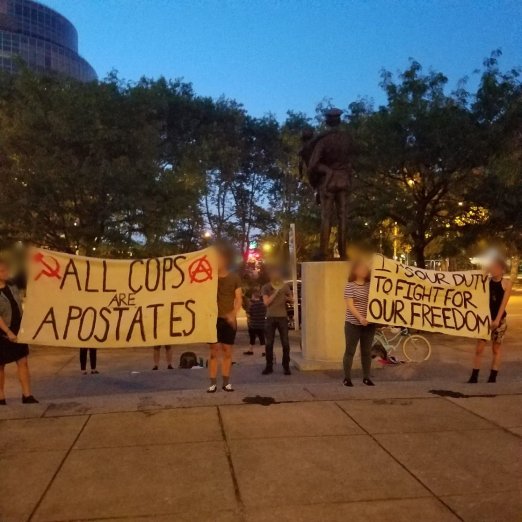from Philly ABC

It’s time for our monthly letter-writing event again, but this time with a twist as the campaign to free the Virgin Island 3 kicks into high gear. Join us at LAVA at 6:30 pm for snacks and drafting letters to Governor Mapp and the Virgin Island 3, who have been locked up for 46 years. Like many aging prisoners, they are experiencing increasing health problems and pose NO RISK to the society they’ve been locked away from for nearly half a century. Because Governor Mapp’s term is ending and he is up for re-election this November, *now* is the time to contact him to urge for commutation of their sentences. This is it; all hands on deck!
How you can help:
1) Write a letter [ideally mail it the first week of October]
Please start by writing a letter to the Governor. This is also a good time to urge folks you know who care about social justice to get on board with this campaign!
Suggested letter format:
Governor Kenneth Mapp
Government House
21-22 Kongens Gade
Charlotte Amalie
St. Thomas, VI 00802
Re: Warren Ballantine, Meral Smith, and Beaumont Gereau
Introduce yourself. This could include comments about your job, family or work in the community.
Explain how you know their cases and/or how you may know them personally.
Explain why you are concerned (if you are from the VI, explain how this affects your vote and if you are from elsewhere explain how commuting their sentences would positively influence society or your view of the VI).
Some Issues are:
1. Length of time in prison
2. Their deteriorating medical conditions
3. Aging and getting old
4. No community threat (example: while they were housed in the St. Croix, they were actually allowed to go out in the community to religious services, sometimes unsupervised, with no issues)
Implore the Governor to commute their sentences. Explain that you understand that he eluded to this before he was elected and at the beginning of his term.
Respectfully end your letter.
2) Fax your letter [ideally the second week of October]:
Fax the letter you wrote to the Governor’s office at:
(340) 693-4374
If you do not have a fax machine, you can send a free online fax using faxzero.com.
3) Email your letter [ideally the third week of October]:
https://www.vi.gov/contact.html
4) Call the Governor’s office [as much and as often as possible until further notice] to ask if they received your letter/fax/email:
Phone: (340) 774-0001
Leave messages urging Governor Mapp to make good on his promise to free the Virgin Island 3 – Warren Ballantine, Meral Smith and Beaumont Gereau (these are the names the state recognizes them under)- by commuting their sentences and releasing them with time served.
A few talking points if desired, but feel free to keep it short and sweet:
• After 46 years of incarceration, they are of seriously ailing health and are extremely unlikely to re-offend… Warren alone is on 6 different types of medication after a massive heart attack a year ago.
• It is costing the state a TON of money to continue to house them and pay for medical care.
Keep up the pressure throughout November or until their sentences are commuted! When you can, drop one or all of the Virgin Island 3 a note telling them about the actions you took on their behalf. You can also read about the campaign in Malik’s own words.
Warren Ballentine #16-047
Tallahatchie Correctional Facility
415 US Highway 49N
Tutwiler, MS 38963
Beaumont Gereau #16-001
Tallahatchie Correctional Facility
415 US Highway 49N
Tutwiler, MS 38963
Meral Smith #16-024
Tallahatchie Correctional Facility
415 US Highway 49N
Tutwiler, MS 38963
—
At this event, we will also send birthday cards to political prisoners with birthdays in October: Skelly Stafford (the 3rd), Jamil Al-Amin (the 4th), Mike Africa & David Gilbert (both on the 6th), Malik Bey (the 8th), Jalil Muntaqim (the 18th), and Eddie Africa (the 31st).





















